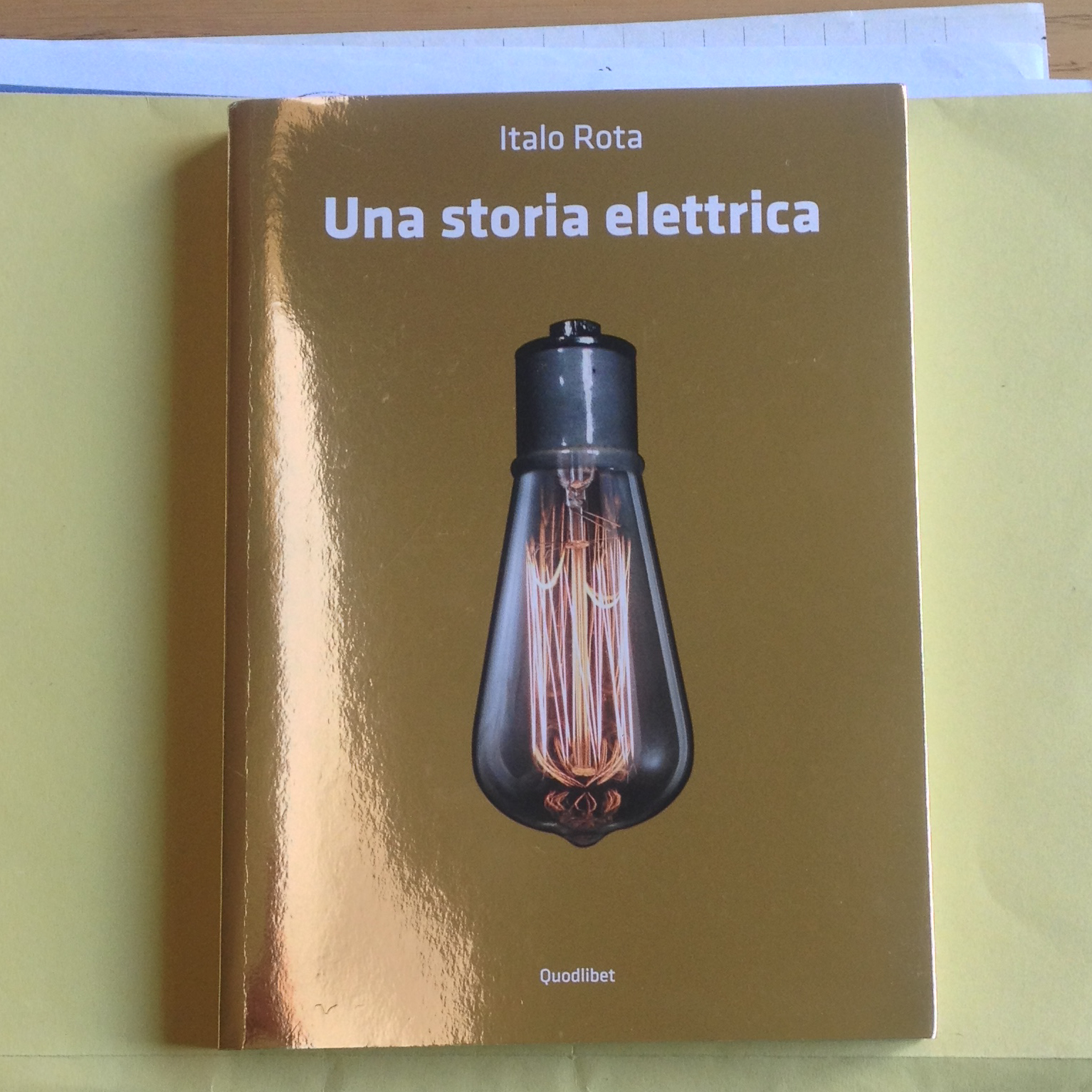Quodlibet, 2014 – 267 pages
“No ideas but in things” – This is the American poet and writer William Carlos Williams’ quote we find inside the reflective and golden cover of Una storia elettrica by Italo Rota from the excellent Quodilibet edition. As initial assumption, the sentence brings us in the dimension of a soft pragmatism that sees in facts, materials, in concrete things, the right place for ideas, almost to say that ideas are useless if not applied. This is probably the last – and the higher – architecture sense, where art and history get inside life dynamics and there they take place. The architect and designer Italo Rota knows it well: trained at Vittorio Gregoretti’ s studio and Lotus magazine redaction, minded towards the cultural significances and the idea of architecture seen as collector, as a vehicle of sense, so in the routine as in the exceptional (we remind the cooperation in the ‘80s with Gae Aulenti for Musèe d’Orsay new setting up and the re-vision of Museo del Novecento in Milan, inaugurated in 2010).
Revision, significance, optimization. In Una storia elettrica, Rota proposes a new approach to contemporaneity protracted towards energetic efficiency. Internet, movement, light, heat inform the spaces of living although in their apparent invisibility and intangibility, like electric energy. In the digital revolution we are going through, in search of a new Esthetic, the homines energetici outline, ready for the third industrial revolution which has already begun to set.
Rota’s lesson is detailed, flowing and never boring; it’s a fascinating story that talks of technology and humankind evolution; combining fragments in a postmodern and interdisciplinary style – mentioning David Lynch, Gilles Clement, Bruce Lee and the geologist Stoppani, and more – Rota explains how we’ve reached the consciousness that the human being has become an essential factor of the Earth geological evolution, so much that the current geological era is defined Anthropocene. This new era where humans have started to alter, in a considerable and permanent way, the global environment, also through big technology works, re-collocates human being inside maximum systems and brings to the necessity, for all the knowledge disciplines, to organize new points of view and considerations according to the new responsibilities.
Besides the six text chapters supported around the key words of sustainability, beauty, efficiency, energy, participation, we find a rich images apparel – defined Atlante with an inevitable recall to Warburg – that extends for 172 intense and vivid colored pages: next to the images realized by Rota himself, we find Mattia Balsamini and Giovanni Chiaramonte’s photographic essays, photographic compositions of anthropic and natural environments, which are often maquette in scale where small plastic characters are portrayed in scenes of everyday life, leisure or work. In Atlante, appear also images of Italo Rota’s project Life/Installed, presented by Samsung at Fuorisalone of Milan in 2012, where the intimate house environment amplifies into an augmented reality, through the tablet filter, showing a new technology that transforms the domestic space to meet the needs of who lives in it.
Between the private and public space, between the room and the street, the future is a terrain vague and architect leaves his tools – the space and matter – to invent an architecture of communication, of vision and, especially, an architecture of experience. He proposes a contemporary philosophy, contaminated and full of appliances just like life.
Jamila Campagna







